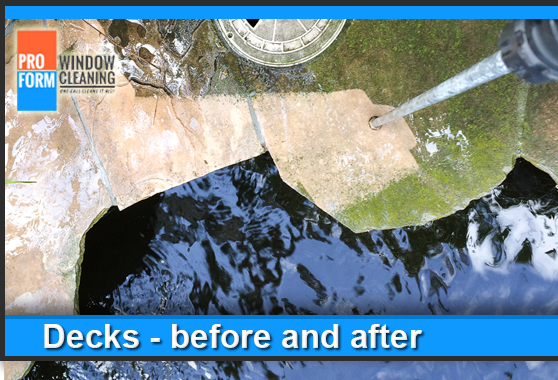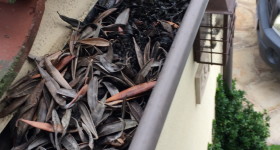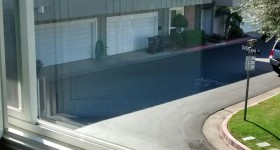Ponds can be beautiful and calming additions to any yard. However, without the proper design and upkeep, they can also be the perfect breeding grounds for mosquitoes. But don’t let that dampen your enthusiasm of having a backyard pond. Here are 5 elements for making your yard unattractive to mosquitoes.

Understanding Mosquitoes
The first step in prevention is understanding how mosquitoes breed and where they tend to inhabit.
Female mosquitoes like to lay their eggs (about 100 to 300 at a time) in dark spots in still water. The eggs then float to the surface of the water where they remain for about 48 hours before hatching into larva. The larva will live in the water for about 10 days eating tiny plants and animals. The newborn then changes into a pupa that floats on the surface of the water for about two days before an adult mosquito emerges.
Mosquitoes do not need a large body of water to lay their eggs, but the more water there is, the more mosquitoes it can support and the more mosquitoes it will potentially attract. The best way to avoid running a mosquito nursery out of your yard is to make your pond undesirable to female mosquitoes or to prevent the larva from developing into pupas. There are several ways to do this.
Adding the Right Fish
Koi may be beautiful, but they are generally too large to prey on mosquito larvae and are known for their mellow nature. You might consider adding fish known for eating mosquito larvae. Goldfish, killifish, and guppies are three types of fish that are known to eat mosquito larvae and will get along well with your other fish. You could also consider adding some fathead minnows if you have a natural pond that is not inhabited by bass, bluegill, or catfish, as these types of fish are all natural predators to mosquito larvae and will not need any additional help fighting them off.
Mosquito fish are very hardy and capable of adapting to different temperatures and salinity. They live naturally in the southern United States. However, some varieties of mosquito fish have been bred to survive colder temperatures, even down to -30oF. They are livebearers and can produce three to four broods each summer of about 25-100 young each. You do not have to worry about them over-populating since they are also aggressive toward each other.
If you have a large birdbath that is constantly filled with water, consider adding about 10 fish. Larger ornamental ponds can support anywhere from 35 to 100 fish. Minnows, guppies, and small goldfish can also be added to birdbaths and ornamental ponds, but they are not as aggressive as the mosquito fish. You do not have to worry about feeding them either, since they sustain themselves on what they find in the water.
Designing the Pond
Any area of your pond that has shallow or still water will be a breeding ground for mosquitoes. This includes the surface of aquatic plants, water in the top of submerged pots, and shallow water near the edges of the pond. Trim any vegetation that hangs over the edge of the pond that might provide shelter for mosquito larvae.
If your pond includes mosquito-eating fish, make sure you periodically raise and lower your pond level. This will dry out or deepen any shallow water where your fish can’t go normally. Also, thin out any plants to ensure that your fish can swim around and through the vegetation. You may want to eliminate any aquatic vegetation around the edges of your garden pond.
If possible, agitate the water surface by using a waterfall or fountain. These elements can be combined with your filter set up, but this is not required. The movement of the water will interfere with the female mosquito’s ability to lay eggs.
Cleaning the Deck
Be sure to regularly have the surface deck of the pond/water feature cleaned. Quarterly cleaning of algae and standing water should do the trick. (See image)
Bti, Methoprene, and Oil
There are three chemicals that can be added to water to help reduce mosquitoes: Bti, methroprene, and oil. Only the Bti is commercially available to pond owners. However, the other two may be used by mosquito control agencies, so it is important to understand what they are and what they do.
Bti (Bacillus thuringiensis) is a naturally occurring type of bacteria that will kill mosquito larvae and some fly larvae but is not harmful to fish, pets, wildlife, or humans. It is commonly sold in doughnut shapes under the name “Mosquito Dunks” or “Mosquito Bits.”
Methroprene is an insect-growth regulator used to control late-stage mosquito larvae. It is found in many flea and tick solutions. Although initial reports have indicated that this chemical is safe to humans, it is not currently available for use in ponds. There are also indications that this chemical may be damaging to frogs and other wildlife.
Oil is an older remedy for controlling mosquitoes. It works by putting a film over the water, thus preventing the larvae from breathing. Unfortunately, oils can also be damaging to aquatic plants and other aquatic insects. Currently approved oils can only be purchased by mosquito control agencies. Contact one of them for this remedy as a last resort. Do not use regular cooking or vegetable oils, which are not only ineffective, but also extremely messy.
Final Thoughts
Whichever method you choose, it is important to check periodically that it is being effective. This can be done by scooping water into a white cup or bowl. Any mosquito larvae should be visible against the white surface. If you see any wriggling little objects, you need to consider an additional method of mosquito control. If you find many larvae in your fishpond, it is possible that you are feeding your fish too much. Try reducing the amount of food for a couple of days and see if the larvae population decreases.
Follow these guidelines and you will be able to enjoy your pond all summer long without having to worry about mosquitoes.



